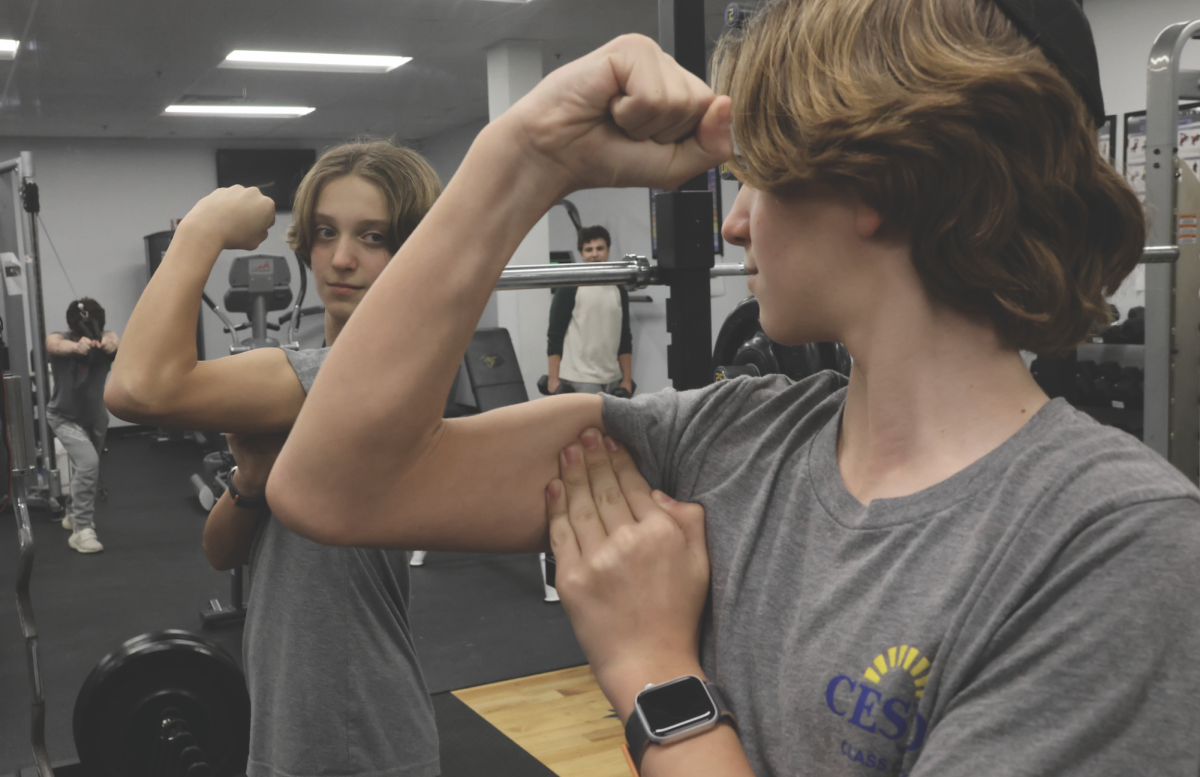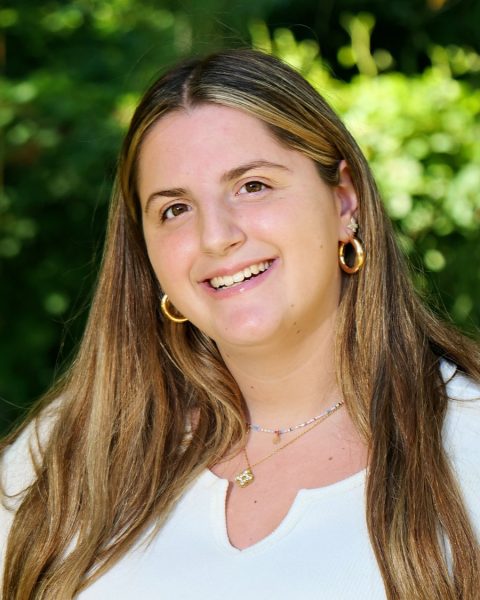As society emerges from the pandemic, long-term impacts of distance learning are still emerging. The CESJDS community is no exception as students and teachers are actively facing the continuing challenges that started with the pandemic.
Educational Impacts
Despite their best efforts, teachers found online instruction difficult and not a suitable learning environment. According to math teacher Karen Pang, not only was it hard to engage students in lessons, but she also struggled to ascertain whether or not they were actually comprehending the material.
“It was harder to get a sense of feeling from the class of what felt easier, what felt harder [or] when they were ready to move on,” Pang said. “People were far less likely to jump in and contribute a thought if they had to unmute themselves … A lot of people were just content to sort of sit muted and not actively participate.”
This disengagement, Pang believes, has partially contributed to the nationwide educational struggles that students of all ages around the country still face.
An analysis published in Harvard Magazine found that students’ math, reading and history scores from the past three years show a “significant decline in learning during the pandemic.” According to this study, titled “Post-COVID Learning Losses,” the average student lagged approximately half a year behind in math and a third of a year behind in reading in mid-2022.
“It was reported that students were not in the same place as they had been in previous years,” High School Principal and Upper School Campus Head Dr. Lisa Vardi said. “During the COVID year, that year that they were out, I think faculty removed a lot of content or lessons… so also the skill building. So faculty reported last year that students did not seem as prepared per se, as they had seen in previous years.”
This learning loss has forced teachers to adjust their lesson plans, specifically in regard to beginning-of-the-year reviews. In her Algebra II classes, Pang usually teaches a short “unit zero” where she briefly reviews important concepts from past years. However, she explained that since online learning, she has been forced to slow that unit down and dedicate even more time to review.
Although the increased review has helped students catch up, it has also limited the amount of lessons Pang has been able to include in her curriculum.
“I hope it reverts back because there’s some curriculum that I’m not getting to,” Pang said. “I’ve cut matrices from the Algebra II curriculum because we just never had time to get there.”
Not only have high school teachers had to adapt, but Lower School teachers have changed their curriculum as well. Second-grade general studies teacher Michal Friedman has noticed a gap in students’ handwriting abilities, for instance. She attributes this to distance learning where teachers were unable to “be on top of them [kids] to see how they were forming their letters.”
“For a year or two right after [the pandemic], we had to redo handwriting for them to help them remember how to write and make sure they’re forming their letters correctly because they were doing so much on the computer,” Friedman said.
Friedman has seen deficits in different skills each year after the pandemic. Two years ago, her second graders were in kindergarten during quarantine and therefore lacked handwriting skills. This year, however, the students in second grade were toddlers at the height of the pandemic, so by the time they were in kindergarten, school was back in-person. Instead of their handwriting skills being affected, Friedman has noticed a gap in their speech ability.
“I have to wonder if it’s because when they were learning sounds and everything, they were in masks, and their teachers were in masks, so they weren’t hearing the sounds as well,” Friedman said.
Standardized Testing and College
Educational impacts have ot just been limited to teachers’ lesson-planning. They have also greatly affected standardized testing nationwide.
The national average composite score on the ACT for the high school Class of 2022 was 19.8, the lowest average score in more than three decades, according to data released in 2022 by ACT. It is the first time since 1991 that the average composite score was below 20.
“The overall ACT score decline is hardly surprising given the unprecedented disruptions of education during the past two years and data showing similar trends in other testing programs,” Robert Schaeffer, Public Education Director of FairTest: the National Center for Fair and Open Testing, said in an interview with Inside Higher Ed.
SAT test scores have also declined since the pandemic, as the national average score in 2022 was 1050, down 18 points from 2018. Broken down by section, the average score was 529 for the evidence-based reading and writing (ERW) section, down seven points from 2018, and 521 for the math, down 10 points from 2018.
Senior Reyut Wasserstein opted to take the ACT last year and believes that because of the pandemic, her score suffered, which aligns with national data.
“The main thing I thought that COVID really disrupted was my lack of understanding of the math section [on the ACT],” Wasserstein said. “I took over 23 full tests before I actually took the real thing and every single one showed me that I totally missed out on geometry.”
At JDS, the ninth-grade math curriculum is dedicated to geometry which was predominantly on Zoom for Wasserstein.
Of the 37 out of 89 seniors surveyed, 40.5% said they believe online learning impacted their standardized test scores, with 37.8% believing their scores were lower than they could have been had the pandemic not occurred.
Along with standardized testing, the COVID-19 pandemic dramatically changed the college admissions landscape. Director of College Guidance Sue Rexford noted how during and immediately after the pandemic, colleges admitted too many students not knowing how many students would come to campus.
“The following year, which was two years ago, they did the same thing and over-enrolled,” Rexford said. “So now they are overcrowded, they have too many students on their campus because more students decided to come back to college than they thought would. You see it mostly in the residence halls; where they were doubles they have a lot of triples.”
Because of this, last year colleges “tightened up” their admissions, Rexford said. The strain over-crowding had on college facilities was untenable, so they became more cautious about enrollment than they were before COVID-19, Rexford said.
Social Impacts
In addition to education, students, teachers and parents alike have noticed the social impact the pandemic had on students’ development. Pang said she noticed a lack of maturity among the class of 2025, considering they missed the bulk of their middle school experience.
“I taught 10th graders [class of 2025] last year, and I felt like a lot of them sort of behaved like misplaced ninth graders,” Pang said. “They didn’t have the maturity that I expected 10th graders to have or some of the skills I expected them to be good at.”
Many current high school students missed significant parts of their middle school experience, which are crucial moments for social development. Without this, many students felt lost coming back to school and are just now beginning to return to normalcy.
“I feel like I kind of learned social skills coming into ninth grade because we missed all of seventh and eighth grade,” junior Joseph Vaisman said.
This wasn’t unique to high schools, as Silver Creek Middle School Resource Counselor Susan Levine noted.
“The year we came back to school, I actually had sixth graders, and we realized they had not been in school since they were in third grade, which is huge,” Levine said. “And it was really, really hard for them to get the right behaviors for learning. Teaching school behavior was our first focus at the very, very, very beginning about coming back to school.”
According to teachhub.com, one of the most important parts of middle school is learning the skills to interact with peers and teachers. Although many students engaged with each other via Zoom during the pandemic, they lacked important face-to-face interactions. For instance, the ability to read facial expressions and other social cues was likely underdeveloped for many students who missed those middle school years.
“Technically we were still talking to each other during COVID, but it was different because we didn’t really learn how to interact with each other when we didn’t have a specific reason to do so,” junior Dino Becker said. “So when a teacher puts you in a breakout room on Zoom you would have a specific thing to work on, but at in-person school, we also need to know how to interact with our classmates in the hallways and stuff like that.”
Post-pandemic, there was a rise in depression across the country, most notably in teenagers. According to the CDC, in 2021, four in every 10 teenagers were experiencing constant sadness or a form of depression. Increased depressive behavior likely leads to decreased social interactions. Additionally, the CDC says that anxiety, especially social anxiety, spiked during the pandemic.
“I feel like the pandemic definitely made me more anxious in terms of interacting with my classmates,” junior Dalia Epstein said.
These problems also arose in middle school students.
“It [COVID-19] really increased levels of panic attacks, [being] unable to go to class, unable to even sometimes come to school, sometimes get out of the parent’s car or get out of the counseling office like intense, debilitating anxiety,” Levine said.
In keeping with that, Levine said that Silver Creek Middle School guidance counselors had to send more students to the crisis center than ever before, and that more students than they had ever seen were hospitalized psychiatrically.
As JDS continues to return to in-person programming, it is important to remember the long-term impacts the pandemic has had on communities across the globe, not just the JDS community. As schools continue to adjust to a post-pandemic world, it is crucial to be empathetic to those struggling after COVID-19. The future is still uncertain; COVID cases are currently on the rise and communities are still figuring out how to navigate post-COVID society.
“Not everything’s been negative…We’re finding ways to help kids find their resilience, and kids are finding it,” Levine said. “As we navigate a post-pandemic world, it’s important to acknowledge the setbacks the pandemic has caused society, and work together to heal and grow from them.”












